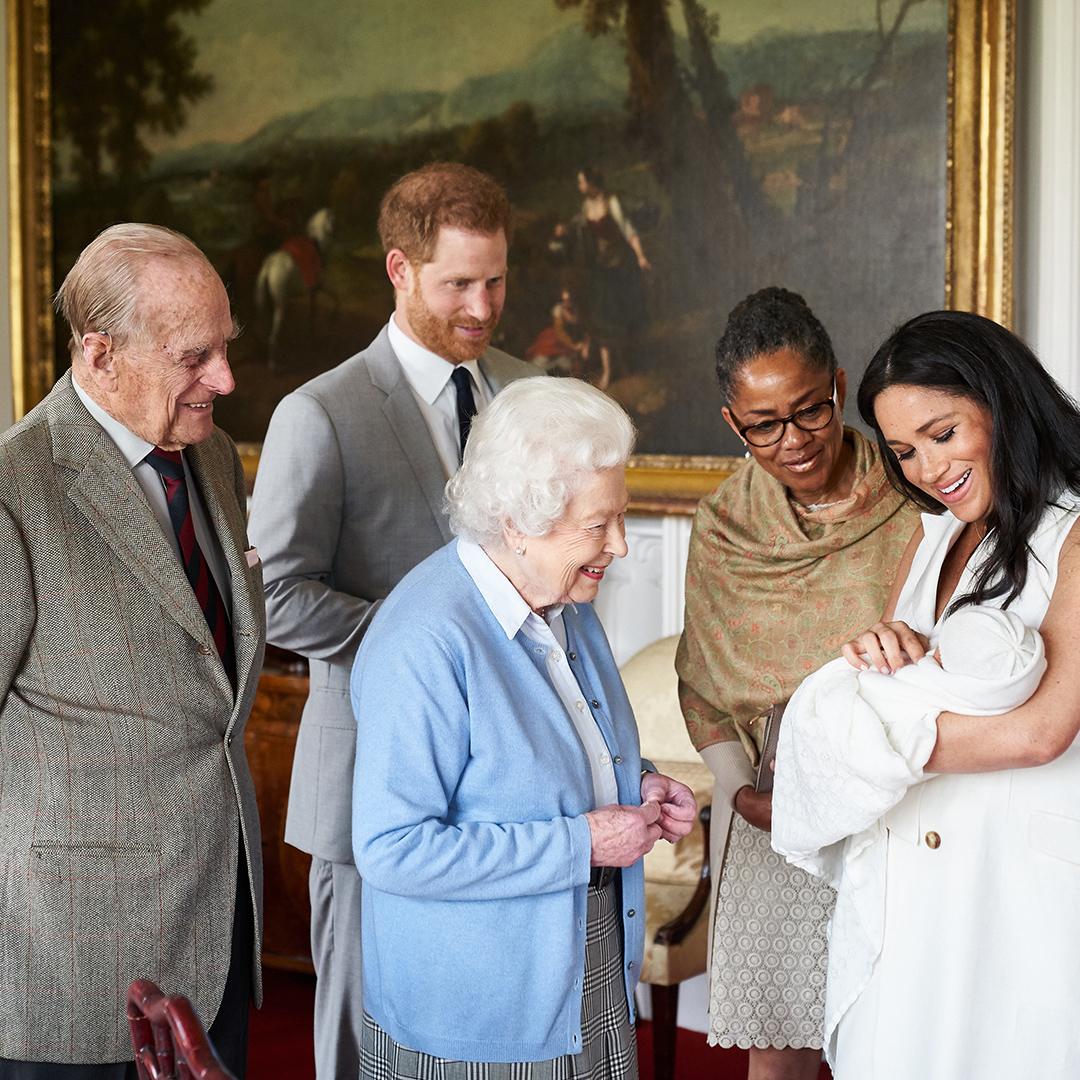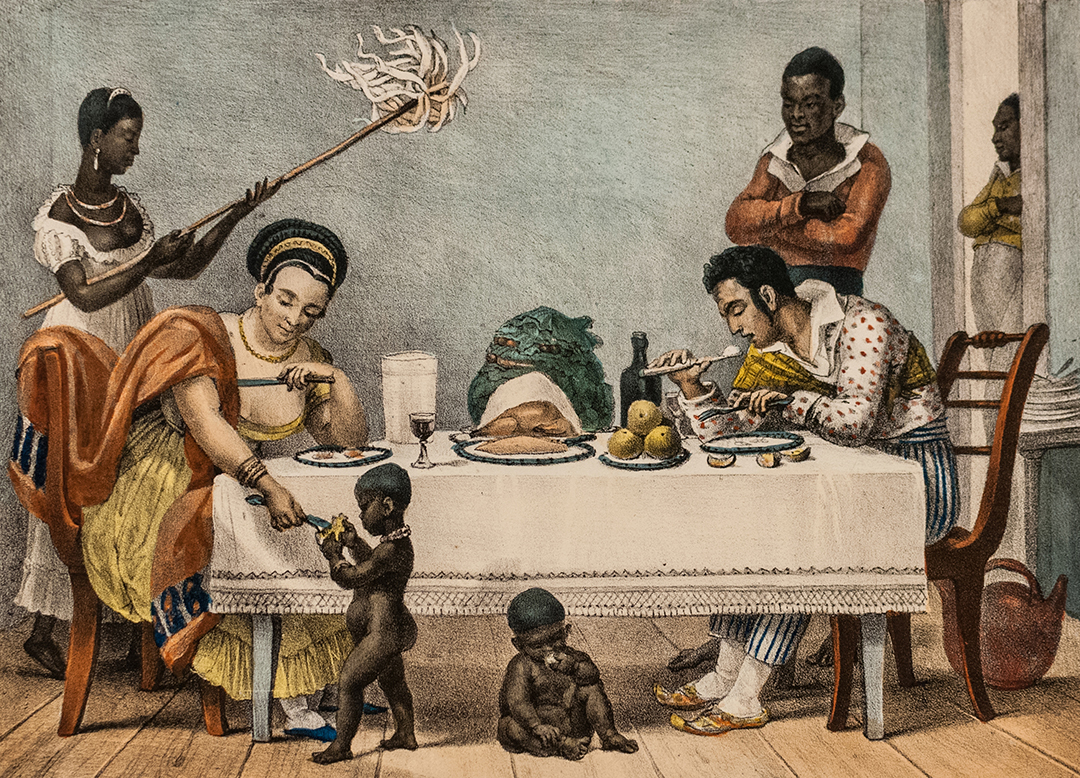PALIMPSESTS
Kinships and Intimacies
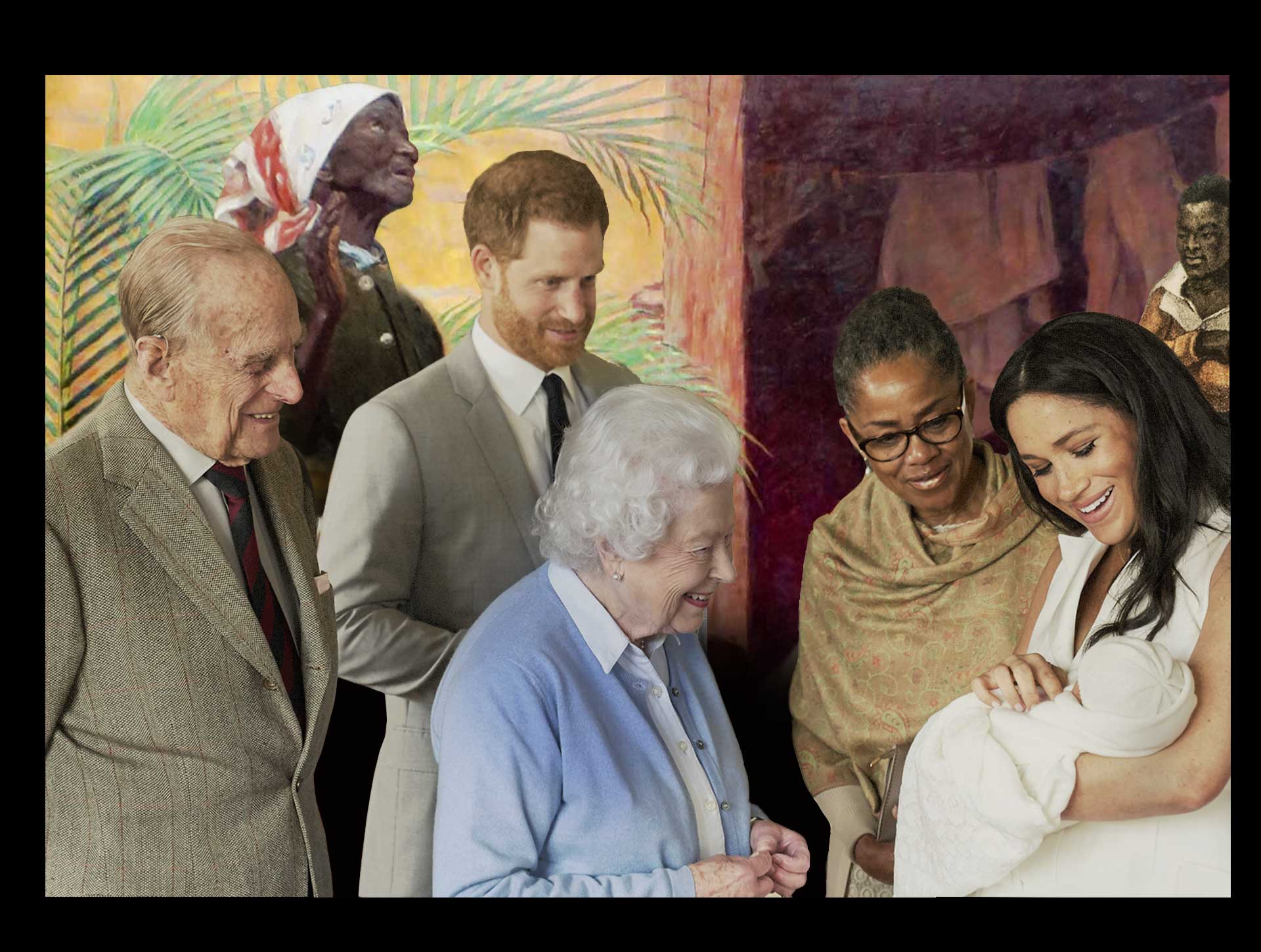
Genealogies
by Tamara Walker
A palimpsestic exercise on race and family formation
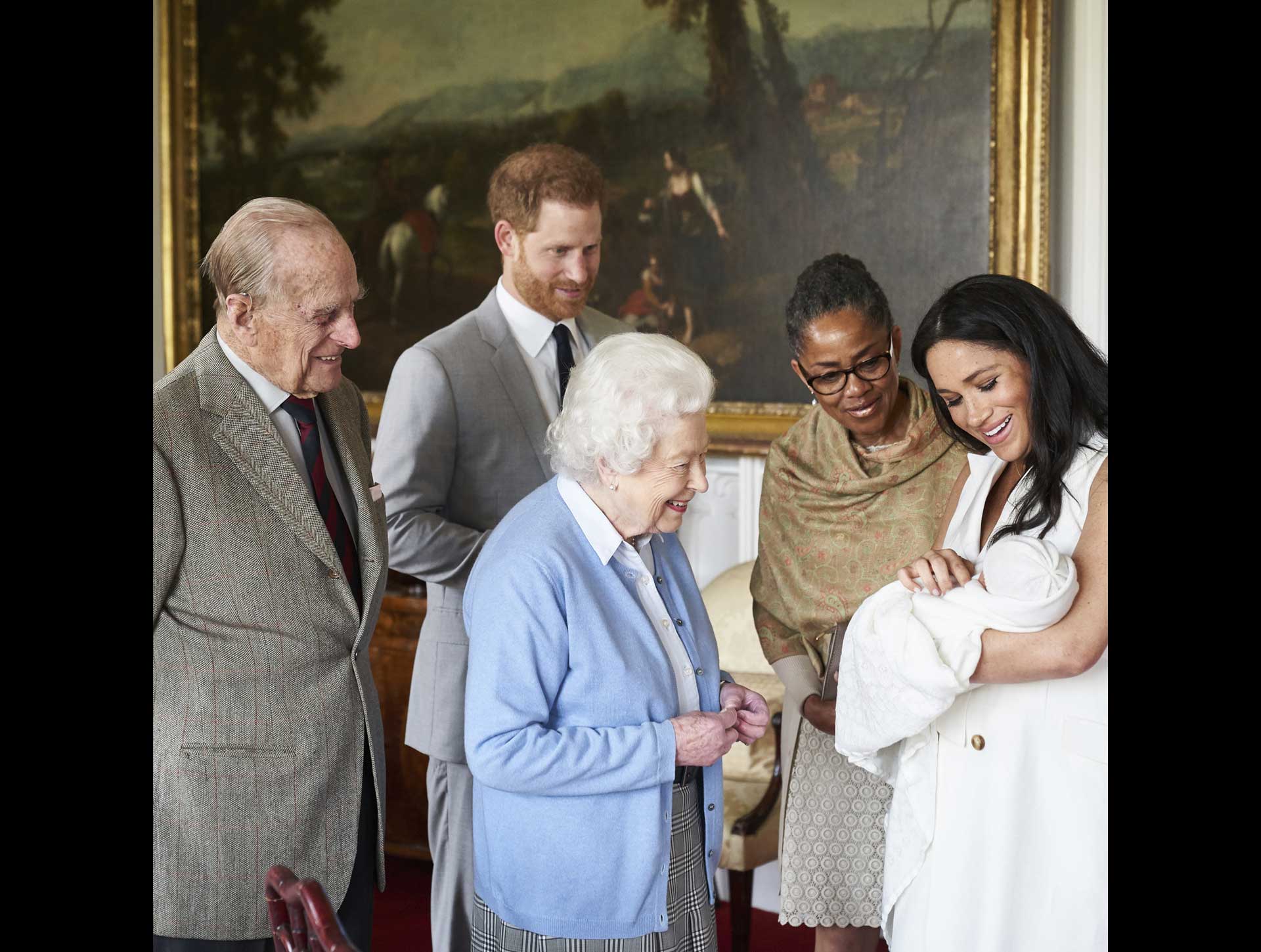
On May 8, 2019, just two days after his birth in a London hospital, an infant was photographed while being held in the arms of his mother. The baby himself is swaddled and positioned in such a way as to obscure all but a small glimpse of his left cheek, perhaps to protect him from the public scrutiny he was destined to receive. The image generated headlines around the world both for its composition and for the joy emanating from the faces gazing upon the child. Here is a racially mixed, multigenerational, inter-class, and international assemblage featuring a biracial, American-born mother, a white British prince for a father, an African American grandmother, and the white great-grandparents, who at the time of the photograph presided over the United Kingdom and its commonwealth.
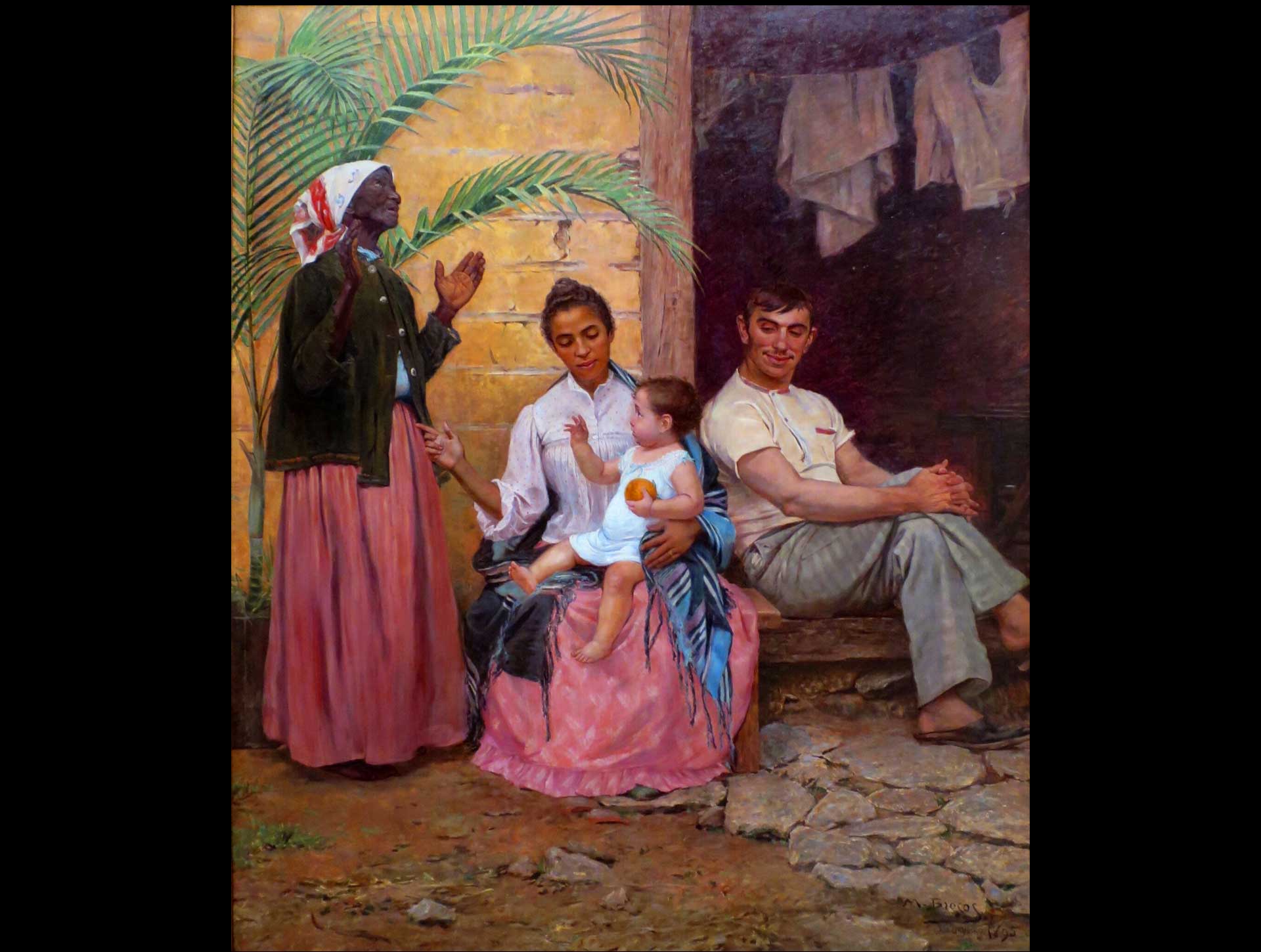
Upon the publication of the royal image, one observer took to Twitter to highlight its visual relation to a renowned Brazilian painting of the post-emancipation era: Modesto Brocos’s A Redenção de Cam [Ham’s Redemption] of 1895. Like the photograph, this emblematic work features a racially mixed, multigenerational family. In this case, the child is held by his biracial mother, under the satisfied regard of a proud white father, and flanked by the figure of his black grandmother, whose upward gaze seems to offer thanks to God for the existence and well-being of the baby. The painting is a product of post-abolitionist Brazil, when elite politicians and thinkers saw whitening through immigration and race-mixing as a means of reducing their nation’s significant Black population and as a tool for modernization.
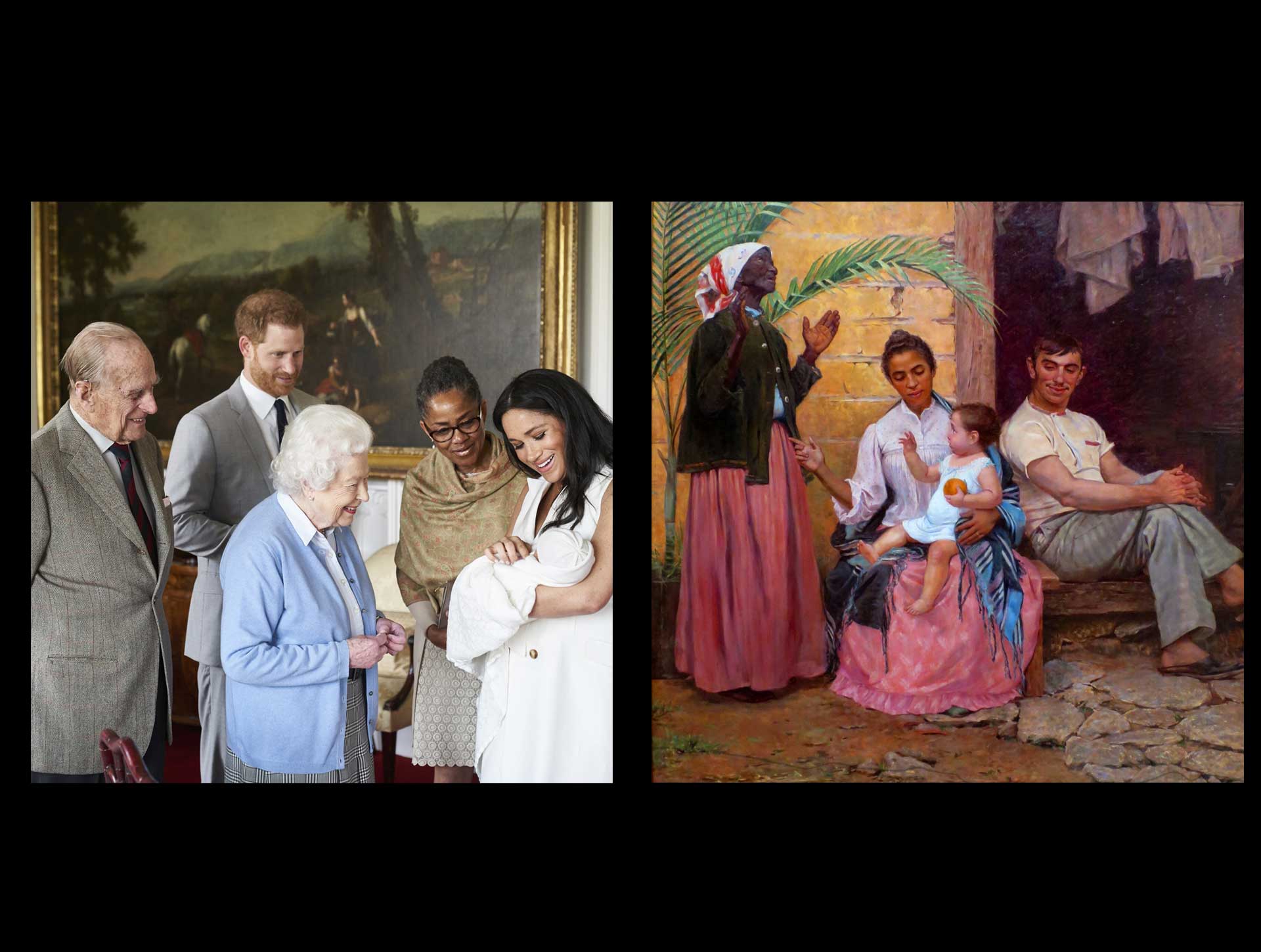
The intriguing iconographic similarities established between the painting and the contemporary photograph suggest how both images seem to speak, as the observer put it on Twitter, “to past and present, hope and fear.” To be sure, the iconographic elements of the painting and the photograph make it tempting to see the latter as a palimpsest of the former. But, is that so? To say as much would be to erase the vast differences between the racial regimes out of which the two works were born, as well as the disparate logics of race and reproduction shaped by histories of slavery in the British and Portuguese empires.

For the infant in the photograph, well before he was even conceived or born, was the subject of concern within the royal family over “how dark” his skin would be. These worries had deep roots in both his mother’s and father’s homelands, where African ancestry had served as a source—via maternal descent—of enslaved status in the British Empire and found codification in law and social practice as an enduring racial marker for generations no matter how many degrees of admixture preceded it. In other words, if the child in the royal photograph was born out of and into a world in which his mother’s racial identity would serve as a source of “degeneration,” the child in the painting was born out of and into a world in which his mother’s racial identity could be repurposed as a tool of “regeneration.”

A third image, Jean-Baptiste Debret’s 1835 print Le Diner [The Dinner] provides a relevant illustration of the visual prehistories that underwrote this idea of “regeneration.” At first glance, the print seems to have little in common with the previous two images in that it centers on a white couple seated at a large table filled with food and drink. Yet the Black man and woman standing at attention behind the table, and the babies crawling on the floor beneath it, compel us to consider their relationship to one another. Could this be an image of a mother, father, and their children? Seen in this way, the white couple literally sits at the very center of black family formation, with the power to dictate Black women’s reproductive output to satisfy their own labor demands and to disrupt at will the resulting bonds for the same purpose.

Debret’s image thus provides a discursive antecedent to Brocos’s image, an index of the racialized and gender-based economies that structured it. In its palimpsestic juxtaposition, Brocos’s painting and Debret’s print reveal how Black men were displaced from the realm of heteronormative kinship in favor of white men, all for the good of the nation.

The surface-level and contextual palimpsests between these three works serve useful and inciting purposes. First, they reveal how images can share similar compositional and visual characteristics across time while being underwritten by vastly different discourses on race and reproduction. And secondly, they provide a way to understand the converse: that two images can share few—if any—compositional and visual characteristics while sharing similar genealogical prescriptions. ■

Genealogies
by Tamara Walker
A palimpsestic exercise on race and family formation

On May 8, 2019, just two days after his birth in a London hospital, an infant was photographed while being held in the arms of his mother. The baby himself is swaddled and positioned in such a way as to obscure all but a small glimpse of his left cheek, perhaps to protect him from the public scrutiny he was destined to receive. The image generated headlines around the world both for its composition and for the joy emanating from the faces gazing upon the child. Here is a racially mixed, multigenerational, inter-class, and international assemblage featuring a biracial, American-born mother, a white British prince for a father, an African American grandmother, and the white great-grandparents, who at the time of the photograph presided over the United Kingdom and its commonwealth.

Upon the publication of the royal image, one observer took to Twitter to highlight its visual relation to a renowned Brazilian painting of the post-emancipation era: Modesto Brocos’s A Redenção de Cam [Ham’s Redemption] of 1895. Like the photograph, this emblematic work features a racially mixed, multigenerational family. In this case, the child is held by his biracial mother, under the satisfied regard of a proud white father, and flanked by the figure of his black grandmother, whose upward gaze seems to offer thanks to God for the existence and well-being of the baby. The painting is a product of post-abolitionist Brazil, when elite politicians and thinkers saw whitening through immigration and race-mixing as a means of reducing their nation’s significant Black population and as a tool for modernization.

The intriguing iconographic similarities established between the painting and the contemporary photograph suggest how both images seem to speak, as the observer put it on Twitter, “to past and present, hope and fear.” To be sure, the iconographic elements of the painting and the photograph make it tempting to see the latter as a palimpsest of the former. But, is that so? To say as much would be to erase the vast differences between the racial regimes out of which the two works were born, as well as the disparate logics of race and reproduction shaped by histories of slavery in the British and Portuguese empires.

For the infant in the photograph, well before he was even conceived or born, was the subject of concern within the royal family over “how dark” his skin would be. These worries had deep roots in both his mother’s and father’s homelands, where African ancestry had served as a source—via maternal descent—of enslaved status in the British Empire and found codification in law and social practice as an enduring racial marker for generations no matter how many degrees of admixture preceded it. In other words, if the child in the royal photograph was born out of and into a world in which his mother’s racial identity would serve as a source of “degeneration,” the child in the painting was born out of and into a world in which his mother’s racial identity could be repurposed as a tool of “regeneration.”

A third image, Jean-Baptiste Debret’s 1835 print Le Diner [The Dinner] provides a relevant illustration of the visual prehistories that underwrote this idea of “regeneration.” At first glance, the print seems to have little in common with the previous two images in that it centers on a white couple seated at a large table filled with food and drink. Yet the Black man and woman standing at attention behind the table, and the babies crawling on the floor beneath it, compel us to consider their relationship to one another. Could this be an image of a mother, father, and their children? Seen in this way, the white couple literally sits at the very center of black family formation, with the power to dictate Black women’s reproductive output to satisfy their own labor demands and to disrupt at will the resulting bonds for the same purpose.

Debret’s image thus provides a discursive antecedent to Brocos’s image, an index of the racialized and gender-based economies that structured it. In its palimpsestic juxtaposition, Brocos’s painting and Debret’s print reveal how Black men were displaced from the realm of heteronormative kinship in favor of white men, all for the good of the nation.

The surface-level and contextual palimpsests between these three works serve useful and inciting purposes. First, they reveal how images can share similar compositional and visual characteristics across time while being underwritten by vastly different discourses on race and reproduction. And secondly, they provide a way to understand the converse: that two images can share few—if any—compositional and visual characteristics while sharing similar genealogical prescriptions. ■
Referenced works
Archie Harrison Mountbatten-Windsor with parents Prince Harry and Meghan Markle, Grandmother Doria Ragland, and great-grandparents Queen Elizabeth and Prince Philip, (2019). Photo by Chris Allerton. © Chris Allerton/Sussex Royal
Modesto Brocos, A Redenção de Cam, (1895). Oil on canvas, 199 cm × 166 cm. Museu Nacional de Belas Artes, Rio de Janeiro, Brazil.


